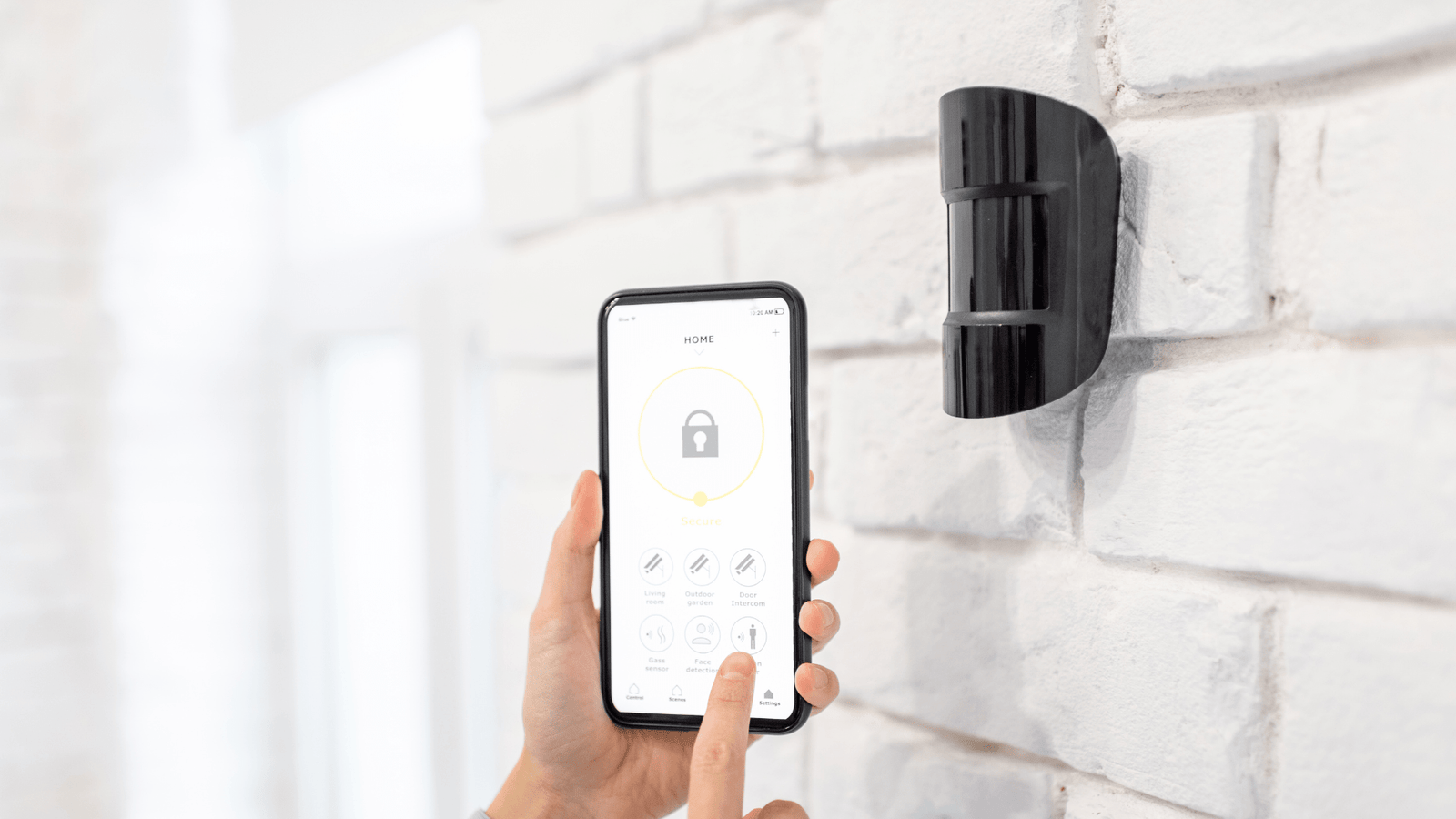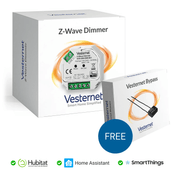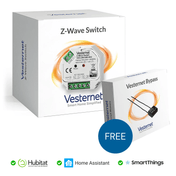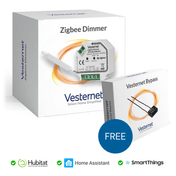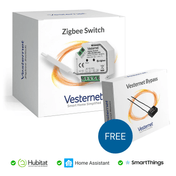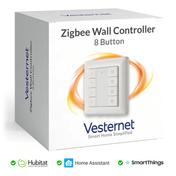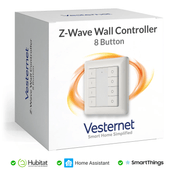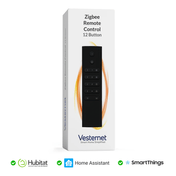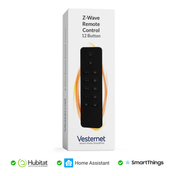From dusk till dawn, from your front porch to your basement, the best smart home sensors are the invisible guardians of your home. They are the eyes and ears of your household, blending seamlessly into your everyday life.
Summary
- Smart home sensors come in a variety of types to make your life easier and provide extra security.
- Our top 5 Z-Wave, Zigbee & Wifi smart home sensors for 2023 offer exceptional features and reliability!
- Integrating them into your system is easy - maximize efficiency by placing them correctly & maintaining regularly.
Understanding Smart Home Sensors
Smart home sensors, also known as smart sensors, are your home’s sixth sense. They are the silent observers that constantly monitor the surroundings, becoming the lifeblood of any smart home. They are like the nerve endings in our skin, always alert, ready to react at a moment’s notice. From detecting a window left ajar or the subtle shift in room temperature, they are the vigilant protectors of your home environment.
But just like us, not all sensors are created equal. There are different types of smart home sensors, each serving a unique purpose. Some examples include:
- Motion sensors: This smart sensor can detect motion and control your smart lights accordingly, illuminating your path as you move around your home.
- Temperature sensors: These sensors regulate your home’s climate to your exact preference.
- Smart security cameras: These cameras keep a watchful eye on your surroundings.
The beauty of these smart home sensors lies not only in their functionality but also in their ability to work in harmony with other smart devices in your home. They can sync up with your smart lights or heating systems, allowing you to tailor your home environment to your precise needs. Imagine coming home from a long day at work to find your house already at the perfect temperature, your favourite playlist playing in the background, all thanks to your smart home sensors. Isn’t that a dream come true?
So, what does this mean for you? It means comfort, convenience, and control. It means living in a home that understands you, adapts to you, and ultimately works for you. And the best part? The possibilities are endless.
Types of Smart Home Sensors
In the world of smart home sensors, variety is the spice of life. There’s a sensor for almost every need and every occasion, each designed to make your life a little bit easier. Let’s start with the most common one – motion sensors. These little gadgets use infrared technology to detect movement in a room or space. They spring into action when they sense something, sending you an alert. But most motion sensors don’t just stop at sending notifications. They can control lighting, and heating systems, and even equip smart appliances. Imagine walking into a room, and the lights automatically turn on, or the air conditioning starts cooling the room before you enter. That’s the power of motion sensors. However, to make the most of them, you need to consider their motion coverage and sensitivity. And remember, the best spots for these sensors are areas that get a lot of foot traffic.
Another important type of sensor in a smart home is the door and window sensor. Also known as contact sensors, these devices are extensively deployed in smart security systems, including window sensors. They are used to detect if any doors or windows have been opened. But their usage is not limited to just that. They can be used to know when your blinds have been opened or closed, when your fridge has been accessed, or even when your doggie door is in use.
The beauty of these sensors lies in their versatility. From alarm motion detectors to window or door sensors, these sensors come in different shapes, sizes, and functionalities, ensuring there’s one for every need and every home.
Compatibility: Zigbee vs Z-Wave vs Wifi Sensors
In the world of smart home sensors, one size certainly does not fit all. Different sensors use different communication protocols, including:
- Zigbee
- Z-Wave
- Bluetooth
- Wi-Fi
But why does this matter? Well, the choice of protocol determines which smart home systems your sensors can connect with. For instance, SmartThings is compatible with both Zigbee and Z-Wave, while Amazon Alexa and SmartThings are compatible with Wi-Fi.
So, when you’re picking out smart home sensors, you need to consider whether they use Z-Wave or Zigbee, Bluetooth or Wi-Fi, and if they have future support for Matter and Thread.
Choosing the right protocol can seem daunting, but it needn’t be. It all boils down to what you need from your smart home system. If you want a system that’s easy to install and has wide device compatibility, Wi-Fi might be the way to go. If you’re after a more secure, low-power solution, Zigbee or Z-Wave could be your best bet. The choice is yours!
Our Top 5 Z-Wave Smart Home Sensors in 2023
As we delve into the world of Z-Wave smart home sensors, let’s take a moment to appreciate the top 5 contenders for 2023. These sensors have carved a niche for themselves in the market thanks to their exceptional features and reliability.
Let’s meet them, shall we?
Aeotec MultiSensor 7

Meet the Aeotec MultiSensor 7, a 6-in-1 Z-Wave Plus multi-sensor that’s as versatile as it is compact. It can detect:
- Motion
- Humidity
- Temperature
- Light lux
- UV
- Vibration
This little sensor has it covered.
And the cherry on top? It’s just 1.8 inches and uses the 700 Series Z-Wave, making it a powerhouse in a tiny package.
Fibaro Multi Sensor

Next up is the Fibaro Multi Sensor, a Z-Wave sensor that’s all about detection. This little device is wireless and battery-powered, with a smart bracket that lets you attach it almost anywhere. From motion detection to temperature sensing, this sensor is a handy addition to any smart home. It can detect:
- Motion
- Temperature
- Light
- Vibration
It can also be used to trigger alarms.
Aeotec Door / Window Sensor 7

Keeping an eye on your doors and windows is the Aeotec Door / Window Sensor 7. This reliable sensor can detect up to 58 inches and is compatible with Z-Wave Plus security hubs like V1, V2, V3, Vera Plus, Vera Edge, and Vera Lite, as well as SmartThings.
It is easy to install and requires no wiring, making it a great choice for those who like to install it.
Fibaro Smoke Sensor

The Fibaro Smoke Sensor is your home’s personal firefighter. This universal, optical Z-Wave smoke detector is always on the lookout for smoke, alerting you at the first sign of trouble. It is designed to detect smoke particles in the air and alert you before the fire spreads. It is also a good idea.
Philio Motion Sensor PSP05 - Gen5

Last but not least, the Philio Motion Sensor PSP05 - Gen5 is a Z-wave motion sensor that’s perfect for home security. With adjustable sensitivity and pet immunity, this sensor ensures your home is secure without being triggered by your furry friends.
It has a range of up to 30 meters, and can detect motion in a 120-meter range.
Our Top 5 Zigbee Smart Home Sensors in 2023
Moving on to Zigbee, let’s take a look at the top 5 Zigbee smart home sensors for 2023. These devices offer seamless integration with popular smart home platforms, making them a top choice for many homeowners.
They are easy to install and come with a range of features, such as motion detection.
Aeotec SmartThings Waterleak Sensor

When it comes to water leaks, early detection is key. That’s where the Aeotec SmartThings Waterleak Sensor comes in. This Zigbee water leak sensor can:
- Detect leakage on both the top and bottom
- Monitor temperature
- Send alerts through the SmartThings app
- Detect low water depth down to 0.03 inches (3 cm)
- Have a battery life of up to 5 years
Making it a reliable choice for any smart home.
The Aeotec SmartThings Water leak sensor is easy to install and use.
Aeotec SmartThings Multipurpose Sensor

The Aeotec SmartThings Multipurpose Sensor is a versatile Zigbee sensor that can monitor doors and windows as well as measure temperature. It’s wireless, easy to control with a mobile app, and can send notifications to your phone, making it a handy addition to your smart home system.
The door and window sensors are easy to install and can be used to detect when doors and windows are opened.
Frient Motion Sensor Pro

The Frient Motion Sensor Pro is a Zigbee motion sensor that offers adjustable sensitivity and a wide coverage range. Whether you’re using it for home security or to detect when your kids come home from school, this sensor is a reliable choice. It is easy to install and can be connected to your existing home automation system. It also has a long battery.
Heiman CO Detector

Safety should always be a priority, and the Heiman CO Detector helps ensure just that. This Zigbee carbon monoxide detector is reliable, precise, and easy to set up. It is a vital addition to any smart home, providing peace of mind and an extra layer of protection.
The Heiman CO Detector is a reliable detector.
Frient Intelligent Smoke Sensor

Last but not least, the Frient Intelligent Smoke Sensor is a Zigbee-based smoke alarm that detects smoke or fire and warns you with a loud sound. It’s a reliable way to keep your home safe.
The best part is, you can monitor it remotely with notifications.
Our Top 5 Wifi Smart Home Sensors in 2023
Wi-Fi smart home sensors are all the rage in 2023, thanks to their easy installation and compatibility with popular smart home platforms, making smart home technology even more accessible.
Here are the top 5 Wi-Fi smart home sensors that are making waves this year.
Shelly Door Window 2

The Shelly Door Window 2 is a Wi-Fi sensor that monitors the status of doors and windows. Whether a door is left ajar or a window is opened, this sensor keeps you in the know.
It’s easy to install and requires no wiring. It’s also compatible with Amazon Alexa and Google Assistant.
Shelly Flood

Water leaks can cause major damage if left unchecked. The Shelly Flood is a Wi-Fi flood sensor that detects water leaks and potential flooding, helping you prevent damage before it happens.
It sends an alert to your phone when it detects water, so you can take action quickly.
Shelly H&T

Monitoring temperature and humidity is a breeze with the Shelly H&T. This Wi-Fi sensor keeps an eye on these crucial aspects of your home environment, ensuring your home is always at a comfortable level.
It’s easy to set up and use, and you can monitor your home’s temperature and humidity.
Shelly Motion Sensor 2

The Shelly Motion Sensor 2 is a Wi-Fi motion sensor that offers wide coverage and adjustable sensitivity. From home security to smart lighting, this sensor can be customized to suit your needs. Additionally, the Aqara motion sensor is another option to consider in the market.
It is easy to install and configure, and it can be used to trigger a variety of actions.
Shelly Plus Smoke Alarm

The Shelly Plus Smoke Alarm is a Wi-Fi smoke detector that alerts you to potential fire hazards. It’s always on the lookout for smoke, keeping your home safe and secure.
It has a built-in siren that will sound if it detects smoke.
Choosing the Right Smart Home Sensors
Choosing the right smart home sensors may seem like a daunting task, but it doesn’t have to be. The key is understanding your needs and what your smart home system wants to achieve. For example, if you want to monitor your home’s temperature and humidity levels, a temperature sensor would be a good choice. If you’re looking for a way to keep an eye on your pets or elderly relatives, a motion sensor might be a better fit.
Once you’ve identified your needs, it’s time to consider compatibility. Do the sensors require their own native hubs and bridges to interact with smart home hubs like SmartThings and HomeKit? Or, are these hubs capable of directly connecting with the sensors? This is crucial, as it can affect how easy it is to manage your sensors and how well they integrate with your existing smart home devices.
Lastly, don’t forget about installation and maintenance. Most smart home sensors are easy to install and require minimal maintenance. However, it’s always a good idea to check them regularly to make sure they’re functioning correctly and connected to your smart home hub.
Integrating Smart Home Sensors into Your Smart Home System
Now that you’ve chosen your smart home sensors, the next step is integrating them into your smart home system. But how do you go about it? Well, it’s simpler than you might think. You’ll need a control centre, which is usually a smart home hub, to get everything integrated and monitored properly.
When adding sensors to your existing system, it’s important to ensure they’re connected to the smart home hub. This way, they can send their readings to the hub, allowing you to monitor and control them from one place. Another factor to consider is the compatibility of your sensors with your current system. For example, if you’re using an Amazon Alexa system, you’ll want to ensure your sensors are Alexa-compatible.
In the end, integrating smart home sensors into your existing system is all about making your life easier. These sensors are designed to work seamlessly with other smart devices in your home, allowing you to:
- Control your lights
- Adjust the temperature
- Monitor your security
- And more, all from one place.
So take the leap and transform your home into a smart one!
Maximizing Sensor Efficiency
Having smart home sensors is one thing, but ensuring they work efficiently is another. To maximize your sensor’s efficiency, it’s important to place them correctly. This means placing motion sensors at the right height and angle, ideally in corners or near valuables.
Regular maintenance is also key to ensuring your sensors are working properly. This includes checking your sensors regularly to ensure they’re connected to the smart home hub and sending their readings. In addition, keeping your sensors clean can help prevent potential damage and ensure they continue to work efficiently.
You can ensure they're working at their best by properly placing, maintaining, and regularly checking your sensors. After all, your smart home sensors are your home’s sixth sense, and you want to ensure they’re always on their A-game!
Summary
The world of smart home sensors is vast and ever-evolving. From understanding what these sensors are, exploring different types, and learning about their compatibility, to discovering the top sensors in 2023 and how to choose, integrate, and maximize their efficiency, we’ve covered a lot of ground. As we move towards a more connected future, these sensors will continue to play a pivotal role in our homes, making our lives more comfortable, convenient, and secure. So go ahead, and embrace the future with smart home sensors!
Frequently Asked Questions
What are smart home sensors, and what do they do?
Smart home sensors are devices that detect changes in their environment and send data to a connected home automation system, such as a smart doorbell or thermostat. They allow you to automate your home to make it smarter and more efficient.
By using sensors, you can control your home’s temperature, lighting, security, and more. You can also set up automated tasks, such as turning on the lights when you enter a room or turning off the air conditioning when you leave with that in mind.
How do I choose the right smart home sensor?
When choosing the right smart home sensor, start by considering your needs and the desired outcome. Make sure to look at compatibility, installation requirements and specific features you need, so you can find the perfect sensor for your smart home system.
What is the role of motion sensors in a smart home system?
Motion sensors play an important role in smart home systems, acting as a security measure by setting off an alarm if movement is detected when the house is unoccupied.
This can be a great way to deter potential intruders and give homeowners peace of mind. It can also be used to automate certain tasks, such as turning on lights when someone enters a room.
How do I integrate smart home sensors into my existing system?
To integrate your smart home sensors into your existing system, you’ll need a control centre or smart home hub. This will ensure everything is properly integrated and monitored.
How can I maximise the efficiency of my smart home sensors?
To maximize the efficiency of your smart home sensors, be sure to place them properly, perform regular maintenance and keep them clean.
Regular maintenance includes checking the batteries, ensuring the sensors are properly connected to the network, and cleaning the sensors to remove dust and debris. This will help ensure that the sensors are working correctly and that they are providing the necessary information.

